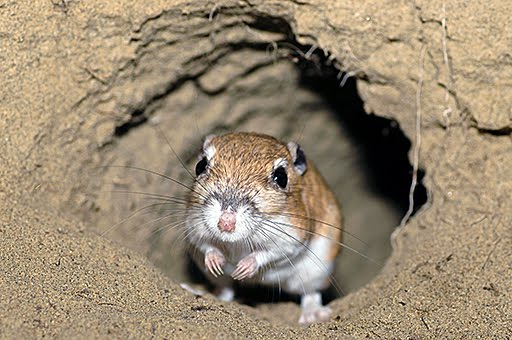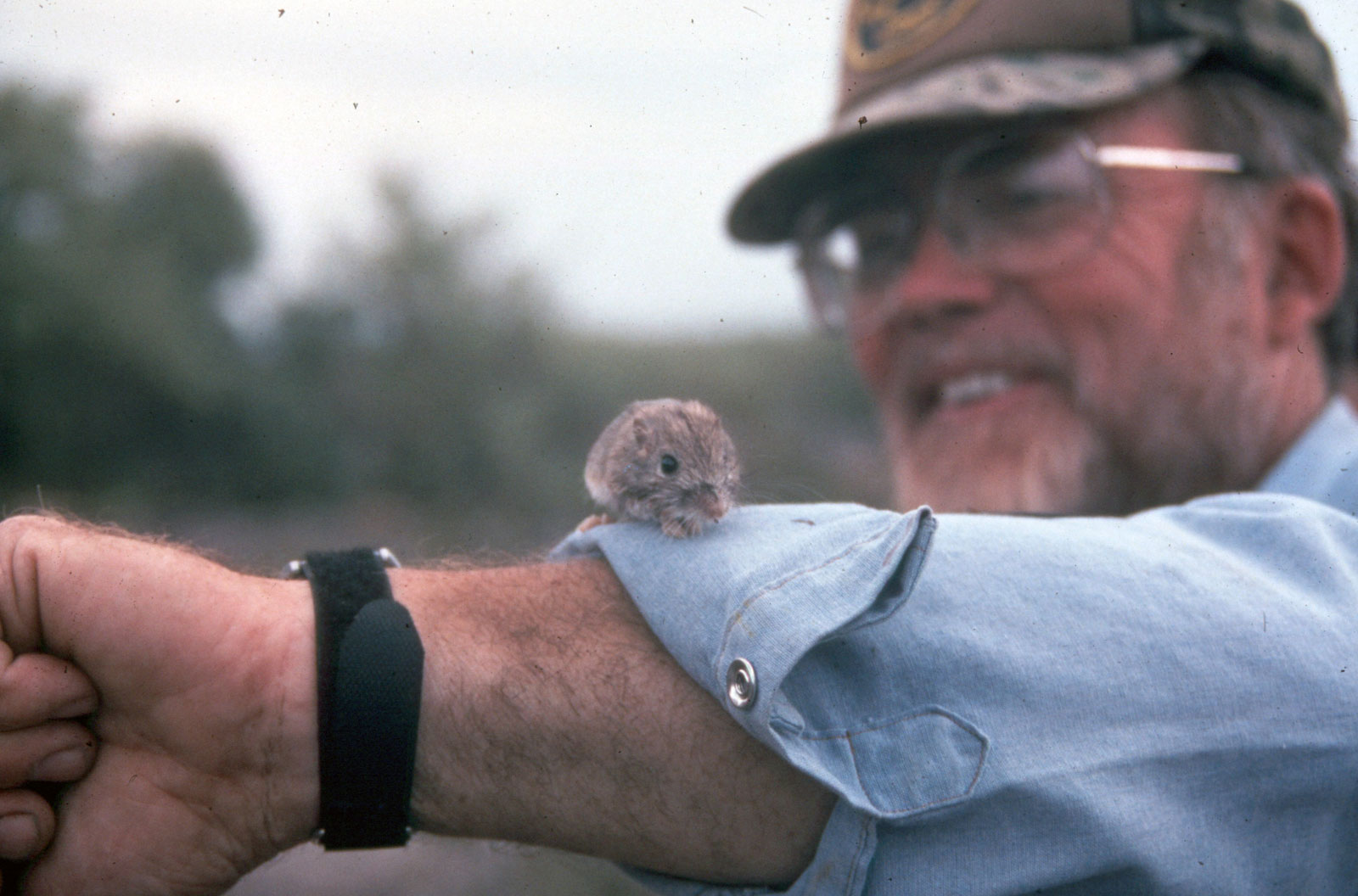Morro Bay Kangaroo Rat: Federally Endangered
- Description/ Taxonomy:
The Morro Bay Kangaroo Rat is one of nineteen species within the Heteromyidae with relatives such as the Lompoc Kangaroo Rat. Although the name suggests otherwise, these mammals are related to squirrels rather than rats or mice, meaning they belong to the Sciuroidae superfamily. Their genus, Dipodomys, occurs only in warmer and more arid parts of North America, like the central coast of California.

All species of Dipodomys are similar with external cheek pouches, large hind legs, long tails, and large heads. The Morro Bay Kangaroo Rat is smaller with darker coloring than other similar Dipodomys Heermanni species, warranting itself full species status.
Another important characteristic of the Morro Bay Kangaroo Rat is that it lives completely isolated from similar D. Heermanni species.

- Ecology:
The range of the kangaroo rat is less than 4 square miles near Morro Bay. They are dispersed over a total area of 4.8 square miles, of which 2.2 miles are occupied by the animals themselves. The rest of the area is either covered with an unsuitable habitat or has been urbanized. The animals have been found nearby the summit of a nameless hill in the area.
In 1971, the estimated total accepted range was about 183 acres over 6 separate localities. A neighborhood known as the Morro Palisades in Los Osos, California is currently the only site likely to still harbor the species.


- Geographic Changes:
In the past, Native Americans set fires to clear vegetation for hunting, potentially benefitting the rats by maintaining seed-producing plants. Residential, agricultural, and commercial development projects have eliminated large proportions of their habitat within its historic range.
Other instances of habitat alternation have not necessarily resulted in permanent elimination of such areas from potential occupancy. Some types of habitat alteration have been beneficial to the rats, especially if they occur on sites covered by old-growth coastal dune scrub or chaparral habitat which are unsuitable for the kangaroo rat.
- Population Changes:
In 1957, the estimated population size was around 8,000. In 1986, nearly thirty years later, the estimated population size was 50.
Since 1971, populations of the species at 5 out of 6 disjunct sites have disappeared.
- Listing:
The Morro Bay Kangaroo Rat was listed as federally endangered on December 13, 1970 and a recovery plan for the mammal was established on January 25, 2000.
- Main Threats:
The main threats and general cause of the species' listing status are direct losses of habitat and seed-producing plants. For the Morro Bay Kangaroo Rat, this has been caused by urban development, changes in vegetation characteristics of remaining habitat, predation by domestic and feral cats and dogs, competition with other burrowing rodents, fragmentation of larger populations into subpopulations and then perhaps inbreeding.

- What Can We Do?
Initiated actions included removing Lompoc Kangaroo Rats the wild and breeding them in captivity. Here, predator, foraging, and social training are developed and implemented into the species to improve survival skills.
Remaining Morro Bay Kangaroo Rats will be removed from the wild in order to breed them in captivity using techniques developed with the surrogate Lompoc rat. Through identifying and coordinating interagency activities, open area habitats in Los Osos and Morro Bay, California must be secured, managed, and improved. If a location is secured, the rats can be reintroduced into the wild using the techniques developed with the Lompoc Kangaroo Rat and the recovery plan can be revised based on population viability analyses.
The date for recovery is unknown because without access to a private parcel of land to support the last extant population, critical recovery efforts for the rat can not commence. Public outreach must still be conducted and fundraising efforts must be made in order to secure a land parcel.

- Other Resources:
Interesting that in some instances the habitat alterations that humans cause are actually beneficial to the rats. Never would have expected to read that.
ReplyDeleteIt is also interesting that they actually resemble squirrels more, than rats. - Regina Seiler
I wonder why they decided to call them rats even if they actually are not genetically related to each other. It's interesting how they are using another kangaroo rats from a different population since they didn't have enough in the morro bay population. -Christine Peters
ReplyDeleteThese little guys are so cute, it's sad to see that they've dropped from 8,000 individuals to 50! I don't think we ever realize how close to home endangerment is, and this species is a great example of a local species facing destruction.
ReplyDelete-Bella Ramirez